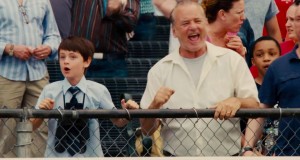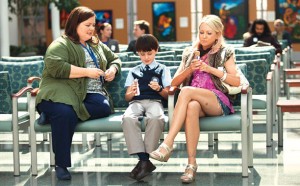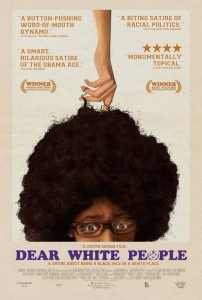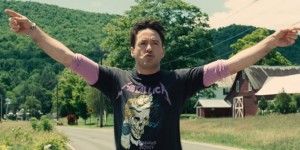Interview: Gina Prince-Bythewood of “Beyond the Lights”
Posted on November 14, 2014 at 9:28 am
It was an honor to speak to one of my favorite filmmakers, Gina Prince-Bythewood, writer/director of one of this year’s best romantic dramas, “Beyond the Lights.” As I spoke to her, she had just received word that Gugu Mbatha-Raw, who stars as Noni in the film, had been nominated for a Gotham award.

You must be so proud of this great recognition for Gugu Mbatha-Raw.
It was a pretty phenomenal morning to wake up to that. Gugu started working on the character really for two years but really hard-core for six months in terms of being in the dance studio for hours, a couple of days a week and then the vocal studio with the vocal coach and the amount of work she put into this character knowing that this character is a hundred and eighty degrees from who Gugu is. You know how bold and brave she had to be to put this out there and to go there and we knew we had to go there given what is happening in the industry now and needing to compete with that and having the knowledge that you have to lead an audience into a world before you can lead them out. So, the fact that she bought into the vision of the piece and really went there — it is just a beautiful thing that she is being recognized and not only for the incredible work she did but in terms of just the preparation. But she gives a really phenomenal performances. I love that it is being recognized.
As a woman who writes and directs, you did a particularly good job of addressing the objectifying elements of what goes on in show business today. Was that an important theme for you to address?
Absolutely. first as a woman who is seeing what happens especially in the music industry and the blueprints that the young artists have to follow to make any sort of noise when they first come out, it really is hypersexualized. But also as a mother of two boys in seeing the trickle-down effect that is happening, the hyper sexualization becoming normal and teen girls and teen boys – and the things that they are doing now are very frightening to me as a mother. And we really are hoping that the film can change the conversation.
I like what you said a moment ago by taking people into the world before you can take them out of it. Tell me a little bit about what that means to you.

For me to put this out there, I mean it was hard shooting the music video as at the beginning of the film and putting that out there in the world and telling an actor to put that energy out. We went there because it was necessary. This is the character that five minutes later is on the edge of a balcony about to jump and we really needed to show the psychological effects on a 10-year-old girl who just wants to sing, who’s probably in front of a mirror singing into a hairbrush and no one dreams about being in an artist and putting that kind of energy out but to make this dramatic jump to that music video and I want the immediate question of how did that happen, how did that little girl become this and what is the psychological effects of that film. So we had to push it and we had to go there because it was important to the story that we were telling.
You have said that you were very glad to be working with Nate Parker again on this film. What makes him one of your favorite actors?
I love Nate as an actor because he has no inhibitions and he would just go for it and that karaoke was a scene that he had to do that. Obviously he is not a singer and he just wanted to do it live and whatever came out of his mouth came out of his mouth. There was a real crowd out there but he just threw himself into it and it is so great the reactions that the audience get when they see it because this character has been so reserved and serious. It was really important to see them thrive in Mexico, both of them letting go and finding their voice and falling in love. And that was a really important aspect to see his character see what Noni brings out in him as well as what he brings out in Noni.
What is next for you?
The next one I am going to write, I’m very excited about it but I can’t talk about it too much. It does deal with female friendships. All my films have a personal aspect and this one is no different, so I’m very excited. And it will be a little more comedic in tone.
You create some of the best love stories that I’ve seen on screen and it is a compliment to say they remind me of the classic romances of the ‘40s with actresses like Bette Davis and Barbara Stanwyck. Are you a fan of that era of movies?
That is a tremendous compliment, thank you. I have to say the great things about film school is being exposed to films that you normally would never see and you get to seei them on the big screen, films like “The Apartment,” which is I think is such a great film influenced on me, “The Rose” is a fantastic film that came out in the ‘70s, “Lady Sings the Blues,” I love that type of romance, to wrecked by movie emotionally and then be built back up and leave inspired. Those are the kinds of films I love to watch and so for me it is writing what I want to see.






